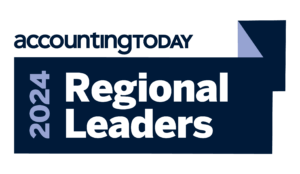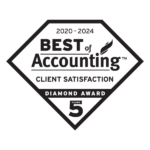How can smaller reporting companies (SRCs) set themselves up for success for SOX compliance?
While the Sarbanes-Oxley Act (SOX) of 2002 applies to all publicly traded companies, small reporting companies (SRCs) face different SOX requirements than what is expected for an accelerated filer.
SRCs are defined as companies that either have a public float of less than $250 million or have less than $100 million in annual revenues and either no public float or a public float of less than $700 million. SRCs are only required to comply with Section 404(a) of the Sarbanes-Oxley Act, which pertains to management’s assessment of internal controls over financial reporting (ICFR). In contrast, accelerated filers must comply with both Section 404(a) and Section 404(b), which includes the auditor’s assessment of ICFR.
This distinction creates unique opportunities and challenges for SRCs when approaching SOX compliance. Here are five key considerations for SRCs to ensure compliance and leverage SOX as a strategic advantage.
Resource Allocation
By their definition, SRCs are smaller in nature, which means they typically operate with more limited resources compared to larger corporations. Ensuring SOX compliance requires careful resource allocation. Outsourcing or co-sourcing functions to outside auditors or consultants can be cost-effective, providing internal teams with specialized expertise, sharing resource constraints, and managing peak workloads. Partnering with third-party service providers is a strategic approach to enhance the internal audit function.
Internal Controls
Effective internal controls are crucial for SOX compliance. Companies need to design, implement, and maintain robust systems to ensure accurate financial reporting. This includes regular risk assessments, identifying potential weaknesses, and implementing controls to mitigate these risks. Additionally, companies must carefully consider whether to reduce or accept risks in areas where the cost of mitigation may not be justified. Regularly reviewing and updating internal controls to address new risks and changes in the business environment is essential for maintaining compliance.
External Auditors Collaboration
Effective collaboration with external auditors is crucial. Internal audit teams should establish open lines of communication with external auditors to align on compliance objectives, expectations, and reliance strategies. Sharing documentation, control testing results, and risk assessments, as well as coordinating walkthroughs, can streamline the audit process and reduce redundancy.
Leveraging Technology for Compliance
Technology can significantly enhance SOX compliance efforts. Internal audit teams should leverage automated tools for monitoring and testing internal controls. Digital tools offer real-time insights, streamline documentation, and facilitate more efficient testing processes. Additionally, data analytics can help identify anomalies and trends that may indicate potential control weaknesses or areas requiring further investigation.
Training and Awareness
Employee training and awareness are crucial for successful SOX compliance. SRCs should invest in ongoing training programs to educate staff about SOX requirements, internal controls, and their roles in maintaining compliance. Fostering a culture of accountability and integrity within the organization ensures that employees understand the importance of accurate financial reporting and the potential consequences of non-compliance.
How Can Schneider Downs Help?
Schneider Downs assists SRCs not subject to the SOX 404(b) auditor attestation requirement in achieving SOX compliance that aligns with management, and where necessary, external auditor, expectations. Our experienced team collaborates with companies to design and execute a cost-effective approach for management’s attestation of effective internal controls over financial reporting.
For more information contact our team at [email protected].
About Schneider Downs IT Risk Advisory
Schneider Downs’ team of experienced risk advisory professionals focus on collaborating with your organization to identify and effectively mitigate risks. Our goal is to understand not only the risks related to potential loss to the organization, but to drive solutions that add value to your organization and advise on opportunities to ensure minimal disruption to your business.
To learn more, visit our dedicated IT Risk Advisory page.




